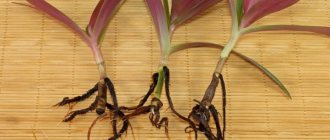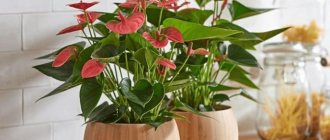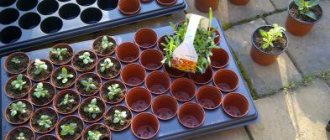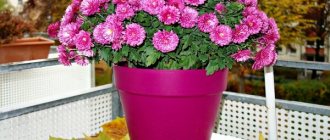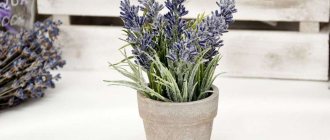Gatsania is a flower of rare beauty. The buds of delicate shades with a two-color frame will attract the attention of every gardener. A wide palette of colors includes snow-white colors: pink, lilac, scarlet, yellow and shades of burgundy. For its unique shape and origin, the plant received the name “African chamomile”. The beautiful Gatsania was brought from the distant shores of Australia and South Africa. Accustomed to the scorching sun and dry climate, the plant is completely unpretentious in care, which will especially please amateur gardeners.
Annual gatsania flowers bloom in colorful inflorescences from late spring until the first frost, reaching a height of up to 10 cm. The plant is very miniature and will complement any interior.
Distinctive features include gray-brown leaves, dense and fleecy, which is due to the protection of the flower from the scorching desert sun. “Midday sun” is another name that gatsania received for its resilience to endure scorching heat and grow in any climatic conditions, generously bestowing lush flowering on the owners of this curiosity.
Perennial gatsania flowers bloom in 20-30 baskets at once, creating fancy buds, and grow up to 30 cm. Activity occurs in the spring-summer period, while in the cold season there is a period of dormancy.
Can gazania be grown as a houseplant?
African chamomile decorates the garden. It is planted in flower beds, in the foreground of rock gardens, along paths. The plant has a powerful root system, a compact, low (25-30 cm) above-ground part. Narrow carved leaves are collected in a rosette.
During flowering, which lasts all summer, gatsaniya throws out tall, straight peduncles, on which single buds are formed. The shape of the flowers resembles a chamomile. The color of the baskets is very bright, diameter 5-9 cm.
In the garden the crop is grown as a summer plant. Where in winter the temperature is not lower than +10 °C - as a perennial. You can keep African chamomile in an apartment. In the summer, take the pot out onto the balcony, loggia, or terrace.
The heat-loving plant develops well at room temperature. With proper agricultural technology, it blooms profusely (15-20 baskets per season) and for a long time. In its homeland in Africa, wild gazania blooms all year round.
Specifics of cultivation
This is a heat-loving crop. For growth, development, abundant flowering, it needs sunlight. Gatsania is a special flower whose baskets fully open at midday when the sun shines on them. By evening the petals close. Taking into account this love of light, they choose a suitable place in the apartment.
Choosing a place for gatsaniya
South and south-west windows are suitable. The plant needs long daylight hours (15 hours) and 6 hours of direct sunlight. The buds do not open on cloudy days. They also close at night.
When growing in an apartment, the flower is illuminated using phytolamps with a blue spectrum. In summer, the temperature in the room is maintained at +20-28 °C. In winter, the flower must prepare for the new growing season, so conditions are created for it to rest. For several months they are transferred to a room where the temperature is kept at +10-16 °C.
Planting container
The flower has a tap-type root system. The main root is long and cannot be bent when planting (transplanting), so choose tall pots with a diameter of 40 cm. The bottom should have several drainage holes. A layer of expanded clay must be poured into the container.
soil mixture
The quality of the soil affects the decorative properties of the plant and its life expectancy. Gatsania roots feel comfortable in a light substrate. It should conduct air and moisture well. In heavy clay soil it stops growing. The soil mixture for the flower is prepared on the basis of ordinary garden soil:
- take 2 parts of fertile soil;
- sift 1 part of the humus;
- add 1 part of coarse river sand;
- add hydrogel.
See also
Description and characteristics of varieties and types of hyacinths, growing rulesRead
All substrate components are mixed well. Hydrogel is an important ingredient. It helps maintain a constant level of soil moisture. This is very important for gatsaniya. It equally does not tolerate severe waterlogging and prolonged drying out of the earthen clod.
Store-bought soil mixtures are suitable for growing gatsania. The packaging of the soil should be marked that the substrate is intended for cacti and succulents:
- Peter Peat Hobby;
- "Cactus";
- biosoil from with the addition of sapropel;
- soil for cacti from "Fasco".
How to plant correctly?
There is a large selection of hybrid and varietal gatsanias seeds on sale. The colors are very different. Seeds for seedlings are sown in February and early March. 3-month-old seedlings are planted in the ground. They dive into a container for home growing at any time. You can buy gatsaniya at a nursery. They offer seedlings in containers.
Sowing
When grown by seedlings, gatsaniya blooms 3-4 months after germination. When purchasing seeds, be sure to look at the dates. Germination lasts only 2 years. It is not difficult to sow gatsaniya. Its seeds are quite large.
The landing algorithm is simple:
- take tall glasses with a volume of 0.5 liters;
- drainage (fine expanded clay) is poured onto the bottom and filled almost to the top with substrate for cacti;
- water the soil with warm water, put 1-2 seeds in each glass, press them down lightly, spray the entire surface with water from a spray bottle;
- Cover the container with cling film and transfer it to a warm, bright place.
Seedlings growing without picking bloom faster. She adapts faster to a new place. But many gardeners prefer to sow African chamomile seeds in a common box.
Take a tall container, with sides 15-20 cm. Gatsania seeds are not soaked before planting. They are laid out dry on the surface of the soil in increments of 2-3 cm. Be sure to press the seeds shallowly or sprinkle them with a thin layer of sand.
The box is tightly covered with film. Keep in a warm place until sprouts appear. Shoots appear quickly. After 10 days, they are seated in separate cups. Gatsaniya tolerates picking well.
How to plant a purchased sprout
Gatsania seedlings are sold in cassettes. The height of the plants is 15-20 cm, the diameter of the root system is 7 cm. To decorate the loggia and apartments, choose beautiful flowerpots. A layer of expanded clay is poured onto the bottom. Purchase soil for cacti. Fill the container with it to ⅓ of the height and water it.
Carefully remove the gatsaniya seedling from the cassette and place it in the pot. Make sure that the central root does not bend. Add soil, compact it and water it. The root neck of the flower is not buried. It should be 3 cm below the edge of the pot. Then there will be enough space for watering.
See also
Description of Katevbinsky rhododendron species, planting and care rulesRead
Adenium flower from seeds at home
The Kutrovaceae family includes a plant called adenium, which is a succulent. The birthplace of the culture is Central and South Africa. When grown in an apartment, a tree or shrub grows very small - up to 35 cm. Adenium also has another name - desert rose, because the flowers are somewhat similar to roses.
Choosing adenium variety
Nowadays there are a large number of subspecies and varieties of crops with beautiful flowering, so lovers of indoor plants are faced with a difficult choice of what exactly is worth growing. Popular varieties of adenium:
Most often for indoor growing they take: Squasikum, Somali, Suchny or Mini. These plants are considered the most unpretentious of all the abundance of varieties, and they bloom earlier than others.
Before you figure out how to grow adenium, you should find out about the sowing time.
Timing of sowing adenium
Desert rose seeds can be planted at any time of the year. The main thing is to pay attention to the length of daylight hours. Most flower lovers agree that late winter or spring are the most favorable periods for sowing.
Selecting a container for sowing
A minimal size pot is the best container for seeds. In such a container, small plants will not suffer from excess humidity. The main requirement for the container is the presence of a large number of holes through which unnecessary moisture, harmful to the roots of the flower, will be removed.
The lid on the container is a significant advantage, because such a pot will serve as a small greenhouse. At the bottom of the planting container you need to lay out a drainage mixture (expanded clay, pieces of foam plastic, crushed brick or coal). Place soil on top and moisten it moderately.
Pots for adenium
Soil preparation
The two main requirements for soil are nutrition and breathability. In terms of acidity, the soil should have either a weak or neutral indicator. Components of an ideal soil:
- coconut fiber – 50%;
- leaf-humus mixture – 25%;
- fine expanded clay (broken brick) up to 3 mm – 20%;
- foam crumbs - 1 handful;
- baking powder (vermiculite or perlite) – 5–10%.
Important! Peat has too dense a consistency, which will prevent root growth at all stages, so there is no need to use such soil.
Mixtures for succulents are also suitable for growing adenium at home. This product is diluted with crushed charcoal and coarse river sand that has been calcined.
How to plant adenium seeds correctly
When starting planting work, it is necessary to prepare the seed material. To do this, you will need a solution of potassium permanganate, where the seeds are placed for half an hour. Then a warm zircon solution is prepared and the material is left in it for another 2–3 hours.
Then the seeds are laid out on the ground and sprinkled with a small amount of the mixture. All that remains is to place the container in a room where the air temperature is +33... +35 °C.
On a note! Cooler temperatures mean that seedlings take a long time to germinate or do not grow at all.
Sowing in peat tablets
Planting adenium seeds in peat tablets follows the same principle as in a container with soil. You will need a lot of space to place individual cups with seedlings.
When a flower sprouts
When growing adenium from seeds, you need to know when sprouts appear. If the temperature conditions are observed, the seedlings hatch in the first 7 days, and sometimes after 2–3 days. When the seeds appear, you need to use a fluorescent lamp around the clock. Gradually, the backlight time is reduced to 12 hours a day.
What affects germination
How quickly sprouts appear from the seeds depends on temperature indicators. Ideally, the room should be quite warm - 33-35 °C. Achieving such values is not very easy, so you will have to use lower heating to germinate the seeds. For this use:
- thermal mats;
- reptile mats;
- warm floor;
- heating batteries.
Transplantation to a permanent place
When planting seed material in one common container, picking is carried out when the plants have 2-3 pairs of true leaves. The first pot should be about 50 ml. You can use disposable cups.
Note! If the root systems of seedlings are too intertwined, they must be separated as carefully as possible.
The next time adenium is planted at six months of age. For flowers that were planted in individual containers, this may be the first transplant. It is important to follow these rules:
- The culture is transplanted after it has completely mastered the existing capacity.
- It is not recommended to take a growing pot where there is a lot of free space. This way the plant will not be able to cope with the incoming liquid, which can cause the root system to rot.
Plants are transplanted to a permanent place from the age of one year, observing the following rules:
- It is not recommended to make very nutritious soil for adult flowers, since their nutrition is regulated by applying fertilizers. In a poor substrate, adenium will develop its caudex better.
- Plastic containers are excellent as pots for this crop. For those who are growing a flower for the first time, it is recommended to use transparent plastic to make it easier to determine the soil moisture level.
- Be sure to have a drainage layer at the bottom of the container.
- After transplanting, the plants can be watered only after 2 days. This time is enough for the injured roots to heal.
What to do if adenium seeds do not germinate
If there are high-quality seeds, the lack of germination may be due to insufficiently high air temperatures. It needs to be adjusted to the optimal value. If the heating is sufficient, there should be no problems.
Important! If, with proper care of adenium grown from seeds at home, there is no development of sprouts, it is necessary to check all the parameters to ensure that they are normal.
Care instructions
Flower growers who grow gatsaniya note its unpretentiousness and drought resistance. No special skills are required to maintain it. It is enough to know the characteristics of a flower and love it.
Watering and fertilizing the plant
Gatsaniya does not need frequent watering. When a clod of earth is systematically waterlogged, the roots begin to rot and it stops growing. The soil is moistened no more than once a week. To control, check whether the top layer (3-4 cm) has dried. Leaves are not sprayed. They are not necessary.
About 2-3 times a week, the gatsaniya in the pot is watered with low concentration flower fertilizer. When preparing the working solution, the dose indicated in the instructions is reduced by 2 times. They are not fond of nitrogen-containing fertilizers. Excess nitrogen prevents abundant flowering.
Caring for soil in a pot
The top layer of soil is renewed. Remove a layer of 1-2 cm and add a new one. When the root fills the entire volume of the pot, the flower is replanted. Select a deeper container. Its height should be one third higher than the old flowerpot.
The transplant is carried out according to the usual scheme:
- drainage layer;
- substrate - ⅓ of the height of the pot;
- transshipment of a flower together with a lump of earth;
- adding soil, watering.
Pruning gatsaniya
The bush produces up to 15 flower stalks per season. Their formation is stimulated by pruning old flowers. They live for 2 weeks. In late autumn, all old flower stalks are removed from the plant at the root.
When and how to plant seedlings in open ground
You can start planting seedlings in central Russia from mid-May. Hardened seedlings quickly take root in open ground, withstanding light frosts. In Siberia and the Urals, transplantation is carried out in early June. If the bushes have not been previously hardened, if there is a threat of frost, take care of temporary shelter.
A place for planting gazania is selected with well-drained soil. If the soil on the site has not been fertilized for a long time, add organic matter - peat, humus, compost. Dig up the soil first, remove weeds, and break up large clods with a rake. African chamomile tolerates drought and direct sunlight. Choose an area that is evenly lit throughout the day. Partial shade and shade are not suitable for the crop - the greenery will grow frail and stretched out, and flowering in such conditions becomes impossible.
The transplant is carried out as follows:
- 4-6 days before planting, stop watering the seedlings, this will reduce the risk of injury to the root system.
- 2-3 hours before transplanting, water the containers with seedlings generously.
- Prepare small holes in the area with a volume slightly larger than an earthen ball or peat pot. The step between bushes is 20-25 cm.
- Remove plants from plastic pots, trying to maintain the integrity of the earthen ball.
- Place the root system in the hole, add soil, and compact gently.
- Water the bushes and mulch the soil to retain moisture.
Advice! There is no need to remove seedlings from peat pots or cassettes. Place the seedling in the hole together with the container and add soil. The container will decompose in 30-40 days, turning into additional nutrition for the roots.
Flower diseases and pests
Gatsania bushes growing at home can be parasitized by mealybugs, spider mites, and aphids. Because of insects, the flower loses its decorative effect. Destroy pests with insecticides:
- "Aktellik";
- "Akarin";
- "Oberon".
With poor agricultural technology, irregular, abundant watering, gatsaniya may suffer from gray rot. Its symptom is a dusty coating on the buds and the underside of the leaves. Treat a sick flower with fungicides:
- "Gamair";
- "Skor";
- "Alirin-B".
What problems do gardeners have with growing and their solutions?
Like all plants, gatsaniya is also susceptible to pests, from which it suffers and may die. These include slugs, aphids, spider mites, and snails.
Pest control methods:
- You can prevent the appearance of ticks and slugs by regularly weeding the area where gatsaniya grows, as well as pouring slaked lime between the bushes. In addition, spider mites can be killed with Ditox, Fufanon;
- It will be possible to get rid of snails only by manually collecting them, preventing further spread;
- To combat aphids, Aktara, Fitoverm, Biotlin are used.
If you notice that brown spots have appeared on the leaves, increasing in number every day, be prepared for the fact that the flower has been affected by gray rot. In this case, it will be very difficult to save the bush, so it is better to dig up heavily infected plants and take them away from the site. To prevent the occurrence of such a disease, you must follow the following rules:
- Do not overwater the gazania;
- Plant it in a well-lit place;
- The soil should be regularly ventilated, but free of drafts;
- For prevention, occasionally spray flowers with Fitosporin.
In some cases, gardeners claim that the plant does not bloom for a long time. The reason for this lies in improper care of gatsaniya or a bad place in which it grows.
Gatsania propagation
Most often, gatsaniya is propagated by seeds. The best time to plant seedlings is at the end of winter - the beginning of spring (February, March). Vegetative methods of propagation are practiced:
- dividing the bush;
- cuttings
For the purpose of propagation, gatsaniya bushes are transplanted into a container for the winter, and the above-ground part is cut off. Keep the flower in a cool (10 °C) room and water it rarely. With the onset of spring, the air temperature is increased to +20-25 °C, watered and fertilized. Start breeding:
- divide the bush into rosettes, root them in separate pots, and plant them in the garden when warm weather arrives;
- Cuttings are cut from side shoots 10 cm or more long and rooted.
The shoots are cut off at the heel, using a sharp scalpel. The bottom leaf is removed, the cut is dipped in root formation stimulator powder (“Kornevin”). The cuttings are planted in pots with a diameter of 9 cm.
Comfortable conditions are created for rooting. Cover with a transparent film cut from a plastic bottle. Provide diffused lighting and favorable temperature. After 5 weeks, each cutting forms a small bush that can be transplanted into a garden or a beautiful flowerpot.
Picking
This stage is skipped if young plants are in deep individual cups or a large container at a great distance from each other. The picking is done after the plant produces its second true leaf. Replant in pots made of peat and soil or plastic glasses.

